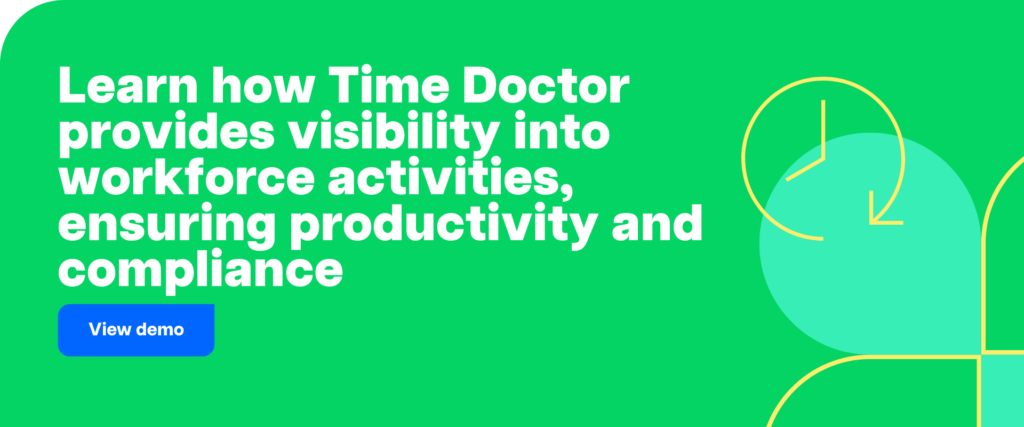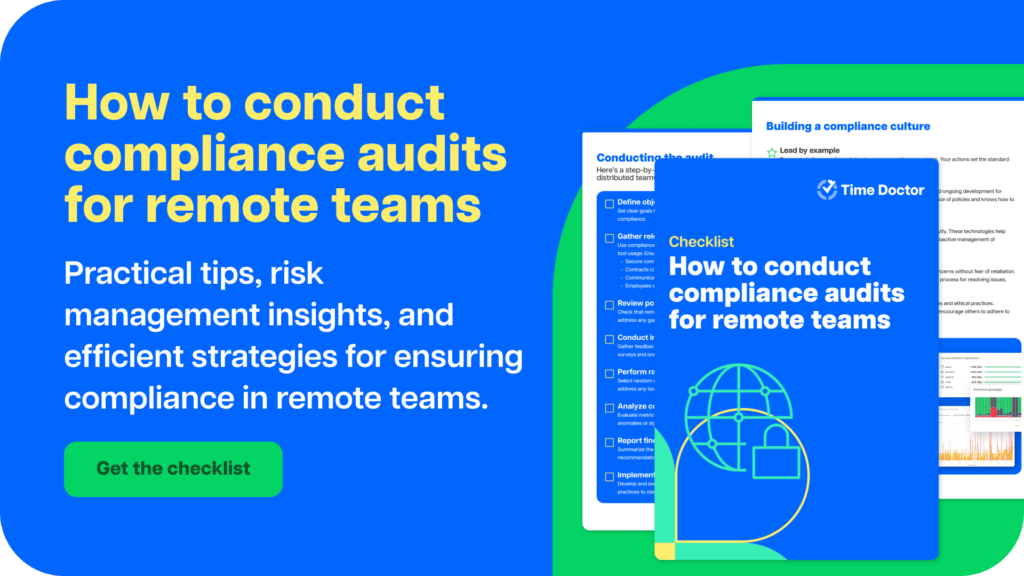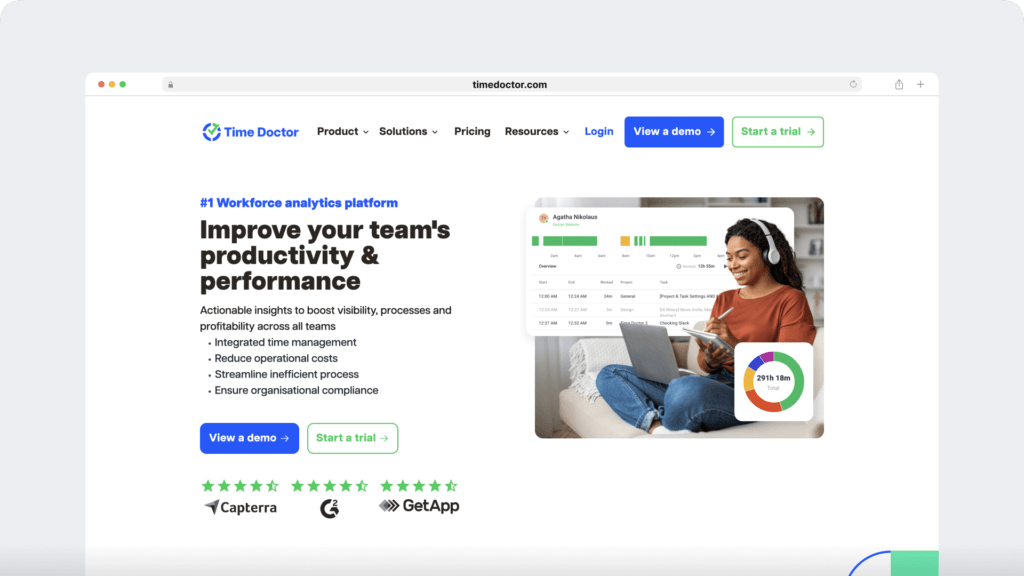What do TikTok, Amazon, Meta and Google have in common with H&M, British Airways and Marriott International?
Don’t worry. This isn’t a brain teaser. The answer is that all these household brands are paying hefty fines for GDPR compliance violations after mishandling personal data.
In Meta’s case, we tallied nearly $2.5 billion (€2.277 billion) in fines since early 2022, including one record-breaking $1.3 (€1.2) billion infringement.
Amazon claimed the #2 spot with $807 (€746) million.
Lower down the list, brands like Vodafone and Telenor, plus several banks, universities, restaurants and even private individuals, received five-figure fines for GDPR non-compliance.
This isn’t a club you want to join. Even minor GDPR violations carry heavy penalties.
To help with that, we’ve compiled this guide to help you implement best-practice GDPR compliance strategies in your organization.

Table of Contents
- What is GDPR compliance?
- The risks of GDPR non-compliance
- GDPR compliance checklist
- What does workforce analytics have to do with GDPR compliance?
What is GDPR compliance?
The General Data Protection Regulation (GDPR) is a comprehensive data protection law that governs how organizations collect, use, and protect the personal data of individuals within the European Union (EU).
Enforced since May 25, 2018, the GDPR aims to give individuals (“data subjects”) more control over their personal data and to standardize data protection regulations across the EU.
Quick tip: GDPR applies to any company that holds the personal data of EU citizens, not just companies based in the EU. Skip ahead to learn more.
So, that means GDPR compliance is…
GDPR compliance means adhering to the regulations and principles outlined in the regulations when collecting, storing, processing and managing personal data.
Those are:
- Lawfulness, fairness and transparency: Organizations must have a legal basis for processing data and must be clear about how they collect, use and share personal information.
- Purpose limitation: Data should be collected for legitimate purposes and not processed in a way that contradicts those purposes.
- Data minimization: Only collect data that’s adequate and relevant to the expressed purpose.
- Accuracy: Personal data must be accurate and kept up-to-date. Organizations must take every reasonable step to erase or rectify inaccurate personal data.
- Storage limitation: Data should be stored in a form that enables identification only for as long as necessary.
- Integrity and confidentiality: Data must be processed securely to prevent unauthorized access, loss or damage.
- Accountability: Organizations must demonstrate compliance and hold themselves accountable.
These regulations don’t just cover customer data. Employees, potential hires, website visitors, suppliers, software vendors – GDPR covers any “natural or legal person” whose data enters your organization’s systems.
Data subjects have clearly defined rights under GDPR, including the right to:
- Be informed about how their personal data is processed, including the purposes, legal basis and data retention periods.
- Access their personal data and obtain confirmation of whether personal data concerning them is being processed.
- Rectify inaccurate personal data concerning them without undue delay.
- Be forgotten, meaning have their data erased without undue delay.
- Restrict processing of their personal data in certain circumstances.
- Receive personal data they have provided and transmit those data to another controller (company).
- Object to companies processing their personal data.
- Not to be subject to a decision based solely on automated processing, including profiling, if the outcome affects them, e.g. ad targeting.
Looking at this list, it’s clear that GDPR compliance is complex and resource-intensive.
GDPR compliance impacts recruitment, employee records, remote working policies, marketing campaigns and many other business activities.
So, why is the number of violations so low?
Despite the billions issued in fines, fewer than 2,100 cases were finalized since 2018.
One analysis by the European Center for Digital Rights – who brand themselves noyb for none of your business – suggests that’s not because the majority of organizations are compliant.
It’s because regulators haven’t found the issues.
When noyb surveyed over 1,000 senior data professionals, the responses pointed to a “culture of non-compliance”:
- 74.4% agreed that an average company would be in violation of GDPR compliance if regulators knocked on the door tomorrow.
- 56% in sales and marketing departments (38.5% overall) said it was difficult to convince senior managers that GDPR compliance was important.
- 51.3% said non-EU/EEA suppliers were resistant to implementing GDPR-compliant measures compared to 22.3% of EU/EEA suppliers
Most worryingly, one-third of respondents (32.3%) reported pressure from senior managers to limit GDPR compliance.
What does this all mean for your organization?
Unfortunately, the evidence suggests that if you’re questioning whether your company is compliant, it probably isn’t.
Even well-intentioned organizations find themselves at risk of non-compliance just by the way they work every day.
Eight ways your organization might be risking GDPR non-compliance
1. Weak security protocols
Insufficient security measures, like storing personal data in unsecured locations, can lead to data leaks that expose sensitive information.
2. Lack of consent
Collecting and processing personal data without explicit consent is a common violation. This is what regulators say Amazon did to attract an $807 million fine, although details are scant and the company is appealing.
3. No good reason
Data is good, but collecting more than you need for the stated purpose goes against GDPR. For example, marketing software that collects too much data or HR platforms that store unnecessary personal data.
4. Data subject rights
Failing to honor individuals’ rights to access, rectify or erase their data, or making it difficult to do so, contravenes GDPR.
5. Employee training
Employees mishandling data due to a lack of GDPR awareness can lead to unintentional breaches. This includes your team accessing personal data without consent or losing data through carelessness.
6. Data transfers
Improperly transferring data outside the EU (for processing, analysis or storage) violates data protection principles, even if the data never leaves your ecosystem. This is how Meta attracted record fines in 2023.
7. Third-party risks
Relying on service providers without proper contractual safeguards or failing to do due diligence exposes your organization to risk.
8. Non-cooperation with authorities
Obstructing regulators or failing to report data breaches within 72 hours has led to hundreds of GDPR fines in recent years.
The risks of GDPR non-compliance
Financial penalties
Those record-breaking fines from earlier were only the big ones. Companies of all sizes and even private individuals are subject to GDPR.
Non-compliance can result in fines up to 2% of annual global turnover or $10.8 million (€10 million), whichever is greater.
Granted, most fines aren’t that high. But repeated violations attract repeated fines, racking up enormous sums.
Legal costs
Affected people can file lawsuits for damages caused by data breaches or other violations. Enforcement authorities and legal activist groups like noyb can also launch litigation.
The cost of these investigations, legal fees, and potential damages adds up quickly. Plus, you’ll need to rectify the compliance issues rapidly, which won’t be cheap.
Reputational damage
Non-compliance erodes customer trust. Customers may choose to do business with companies that prioritize data protection.
We’ve seen this with high-profile organizations and small businesses alike.
Data breaches and privacy incidents also negatively impact employee morale and productivity. It’s hard for people to trust an employer that cuts corners.
Business disruption
GDPR violations and the resulting investigations disrupt operations, leading to productivity losses.
Non-compliance can also hinder expansion into the EU or regions with stringent data protection laws. Several non-European companies have been forced to change how they do things to avoid reoffending.

GDPR compliance checklist
We’re not trying to scare you. We understand that GDPR is complex, and many small to mid-sized businesses don’t have the resources to play whack-a-mole with compliance issues.
However, there’s no time like the present to start addressing these issues.
Make a compliance strategy one of your priorities for the coming quarter, using our guide to get started.
Here are some GDPR compliance strategies that will protect your organization, build customer trust, and boost employee confidence with data.
We’ve separated the strategies into ‘projects’ to help you fast-track a plan.
Data mapping and assessment
- Identify personal data: Determine the types of personal data your organization collects, processes and stores.
- Assess processing activities: Evaluate how data is used, shared and protected throughout its lifecycle.
- Risk assessment: Identify potential compliance risks, prioritize the urgent ones and implement appropriate safeguards.
- Rethink remote work processes: Global organizations risk violations if they send personal data outside Europe without permission. That includes seemingly innocent activities like sending spreadsheets or sharing logins to systems without GDPR features.
Data minimization and retention
- Collect only necessary data: Gather only the data required for specific purposes.
- Data retention policies: Establish clear guidelines and processes for storing, updating and deleting data.
- Regular data audits: Review data regularly to ensure it remains relevant and accurate.
Consent management
- Obtain valid consent: Review data consent to ensure your communication is specific and unambiguous.
- Document consent: Maintain consent records.
- Manage consent preferences: Make it easy for people to withdraw or modify consent.
Employee training
- GDPR awareness: Educate employees at all levels about GDPR principles and their responsibilities.
- Data protection training: Provide specific training on data handling procedures and security best practices.
- Regular updates: Keep employees informed about changes in regulations and organizational policies.
Data security
- Risk assessment: Identify potential data security vulnerabilities.
- Technical safeguards: Implement encryption, access controls and data loss prevention measures.
- Incident response plan: Develop a plan to respond to data breaches efficiently and effectively.
Data subject rights
- Access requests: Establish procedures for handling data access requests.
- Rectification and erasure: Implement processes for correcting or deleting inaccurate or unnecessary data.
- Data portability: Provide mechanisms for data transfer upon request.
Third-party management
- Due diligence: Assess the GDPR compliance of third-party service providers handling personal data.
- Contractual obligations: Ensure services agreements and contracts include data protection clauses.
- Track transfers: Map where data goes for processing, as some software vendors might not tell you they’re using non-EU servers.
- Regular monitoring: Monitor third-party performance and compliance.
What does workforce analytics have to do with GDPR compliance?
Workforce analytics runs on personal data. All those wonderful insights you gain from integrating workforce analytics into your systems depend on it.
Tools like Time Doctor, designed to provide visibility into employee activities, handle sensitive data that falls under GDPR.

It’s crucial to approach workforce analytics with a privacy-first mindset. Ensure any data collected or processed in the EU/EEA or from citizens of the region aligns with GDPR principles.
Once you’re satisfied, you can explore the ways that workforce analytics proactively addresses GDPR compliance.
For example, Time Doctor’s Unusual Activity Report (UAR) is designed to identify suspicious behaviors like employees using unauthorized tools or applications. Our Website & App Usage reports provide additional detail to help you catch compliance issues early.
We’ve built in more compliance-focused features to help you monitor risks and understand the scale of non-compliance:
- Accurate time tracking
- Detailed reporting
- Real-time monitoring
- Automated alerts
- Industry-leading data security
The transparency and insight you gain from workforce analytics are crucial for maintaining compliance, identifying patterns of worrying behavior, and providing targeted training so it doesn’t happen again.
If you’re interested to learn more about compliance and security at Time Doctor, we have an in-depth guide here.
Don’t hesitate to contact our support team for any other questions, including tips on protecting privacy in your workplace.

Liam Martin is a serial entrepreneur, co-founder of Time Doctor, Staff.com, and the Running Remote Conference, and author of the Wall Street Journal bestseller, “Running Remote.” He advocates for remote work and helps businesses optimize their remote teams.


